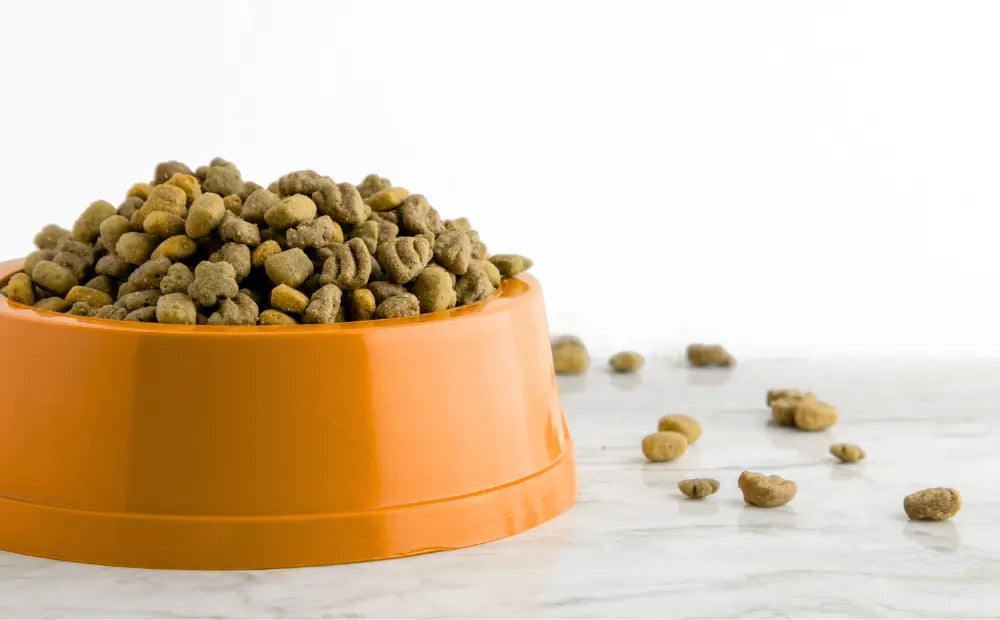
What’s in Your Pet’s Bowl? A Clear Look at Pet Food Ingredients
From proteins and fats to carbs, vitamins, and even misunderstood ingredients like meat meals or preservatives, every component has a role to play. In this guide, Dr. Danielle Conway breaks down what those ingredients do, debunks common myths, and shares how to read labels with confidence so you can make informed choices for your pet’s health.
By Dr. Danielle Conway
Choosing the right pet food starts with understanding what’s inside. Every ingredient in your pet’s bowl serves a purpose, even the ones that often get misunderstood. Let’s take a closer look at how these components work together to support your pet’s health, while debunking a few common myths along the way.
Why Protein Matters and Where It Comes From
Protein is the cornerstone of your pet’s nutrition. Ingredients like meat, poultry, fish, and plant-based options such as soy or peas supply essential amino acids your pet’s body cannot make on its own. These amino acids help repair tissue, support immune function, and supply energy.
Dogs, as preferential carnivores, need more protein than humans, while cats, true obligate carnivores, rely even more on animal-based sources like chicken or fish. When choosing pet food, go for clearly named proteins like “chicken” or “salmon” over vague terms like “meat byproduct.”
Fats and Oils: More Than Just Calories
Fats often get a bad rap, but they’re essential for your pet’s well-being. Ingredients like chicken fat and fish oil provide omega-3 and omega-6 fatty acids. These promote brain development in puppies and kittens, regulate hormones, and maintain a shiny, healthy coat.
While fats are calorie-dense, the key is balance. Pets with too little fat in their diet may have dry skin, poor coat quality, or lack energy. On the other hand, too much fat without adequate exercise can lead to obesity. Look for food that lists specific fats like “chicken fat” or “salmon oil” rather than generic terms.
Carbs are for Energy, And Fiber Too
When used thoughtfully, carbohydrates offer real benefits. Grains (like rice, corn, and wheat), legumes, and vegetables supply readily accessible energy and help keep your pet full and satisfied. Contrary to popular belief, true grain allergies in pets are extremely rare. More often, food sensitivities stem from proteins or environmental triggers.
Carbohydrates also contribute valuable fiber. Ingredients like beet pulp, chicory root, and chia seeds support the gut microbiome and promote healthy digestion. Soluble and insoluble fiber ensure regular bowel movements and a balanced digestive system. If your pet suffers from irregularity, adding fiber can often help.
Vitamins and Minerals: The Essential Detail
Whether sourced from whole foods or added as supplements, vitamins and minerals are foundational to pet health. Vitamin A supports vision and immune health; vitamin D aids bone development; vitamin E protects cells from damage; and the B-complex group supports energy production and brain function.
Minerals like calcium, phosphorus, and zinc are also essential. Calcium and phosphorus build strong bones and teeth, while zinc plays a role in skin health and wound healing. High-quality pet foods balance these nutrients carefully to prevent imbalances that can affect growth or long-term health.

Rethinking Controversial Ingredients
Meat Meal Isn’t the Villain
Meat meals and byproducts often get a bad reputation, but they’re not inherently harmful. In fact, meat meals can be extremely nutrient-dense. For example, chicken meal is created by drying and grinding parts of the bird left after prime cuts are removed. The result is a high-protein, clean ingredient free of feathers, feet, or entrails.
The key is quality.
Flavorings Serve a Purpose
Flavorings like meat broth or “natural flavor” make food more appealing, especially for picky eaters or aging pets with reduced appetite. Just as we enjoy seasonings in our meals, these ingredients enhance flavor for your pet without undermining nutritional value. They can help ensure pets receive consistent nutrition, even if they’re fussy.
Preservatives Aren’t the Enemy
Preservatives, whether natural, like tocopherols (vitamin E) and citric acid, or synthetic, are used to prevent spoilage, especially of fats. Without preservatives, dry pet food could turn rancid and become unsafe to eat. Properly used, these ingredients ensure your pet’s food remains fresh, safe, and nutritionally consistent from the factory to your pet’s bowl.
Making Confident Choices for Your Pet
Don't let buzzwords or flashy packaging fool you; look for clear, purposeful ingredients. Choose brands that use whole foods, name their protein and fat sources, and preserve safely.
Not sure? Ask your vet. With the right info and some label-reading confidence, you can make smart choices that support your pet’s health and happiness—starting with what’s in their bowl.
